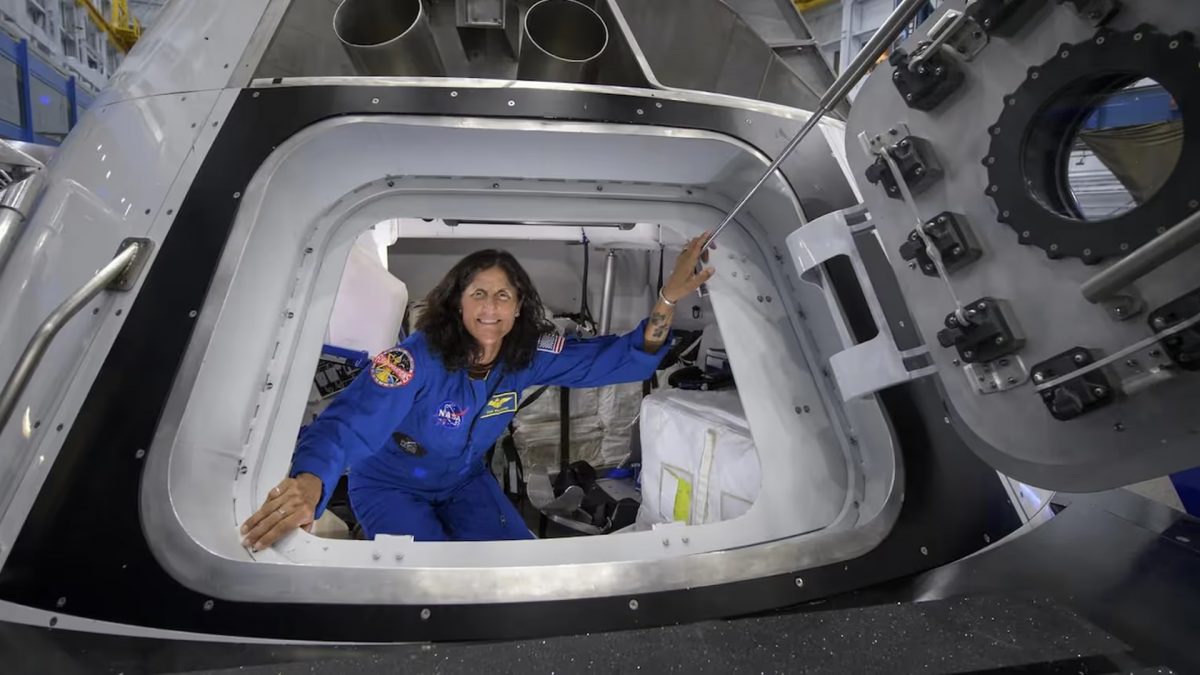Indian-origin astronaut Sunita Williams has remained in space for 50 days and counting since taking off on the maiden Boeing Starliner flight, which was intended to be a 10-day mission.
After several helium leaks, the Starliner’s propulsion system experienced malfunctions.
But according to NASA, the veteran astronaut and her fellow Barry “Butch” Wilmore are safely on board the International Space Station (ISS), where since June 6 they have been helping the seven astronauts of Expedition 71 with various experiments and maintenance.
Here’s what she’s doing up there.
‘Gardening’ in space
The US space agency said Williams, who is on her third space mission, and Wilmore are “exploring ways to effectively water plants in the weightless environment.”
The duo is performing experiments in the Harmony module, which acts as a connecting passageway between international space labs and spacecraft.
Air, electricity, and water — all necessary life-supporting systems — are supplied by Harmony.
They have been experimenting with several approaches to controlling plant growth in microgravity.
“The duo took turns throughout the day in the Harmony module, testing how root models and plants of various sizes would absorb water in microgravity,” NASA reported.
To support plants growing outside of spacecraft, this research uses methods like hydroponics and air circulation.
Wilmore carried out additional testing using hydroponics and air circulation techniques, while Williams originally assembled the hardware for Plant Water Management and evaluated various liquid flow techniques, as per the Economic Times.
Impact Shorts
More ShortsAdditionally, Williams “investigated using fluid physics, such as surface tension, to overcome the lack of gravity when watering and nourishing plants being grown in space.”
This work is a vital step in understanding how plants grow and respond to microgravity conditions. When mankind attempts to construct diverse bases in the solar system and beyond, this research will be essential.
Vein scans
Wilmore and Williams also took part in ultrasound-assisted vein scans, according to News18.
While the two cycled between imaging the veins in each other’s neck, shoulder, and legs, doctors on the ground kept an eye on them in real-time.
Wilmore also performed a vein scan on Matthew Dominick, an NSA astronaut, to better understand the effects of microgravity on the human body.
Aside from basic biology studies, astronauts are investigating the effects of space travel on the human body and mind.
Williams used DNA extraction to identify microbial samples taken from the ISS’s water systems. The ISS is akin to a little city in space, and it has been in operation for 25 years, the report said.
The genetic biotechnology experiment’s findings could lead to better ways to maintain crew health and clean spaceship systems on next trips.
The rare day off
Earlier this week, Williams and Wilmore even had a rare day off on the ISS. They spent some time aboard the Starliner spacecraft when it was attached to the forward port of the Harmony module, according to India Today.
Sunita Williams, Butch Wilmore confident Boeing space capsule can safely return them to Earth, despite failures#SunitaWilliams #Space pic.twitter.com/eVFNx6Bou0
— Voice of Assam (@VoiceOfAxom) July 11, 2024
The astronauts performed routine physical exercises, household duties and public affairs, made phone calls to their families during their free time, enjoyed leisure activities, and took in the view of Earth from space.
They entered the Starliner in the afternoon, powered down the tablet computers after they had been recharged the previous night, and turned on the lights and screens.
Testing in New Mexico and Alabama
Williams and Wilmore were launched aboard the Starliner from Florida on June 5 and docked the next day at the ISS, where they were initially scheduled to spend roughly eight days.
Several issues with Starliner’s propulsion system have extended their mission indefinitely. Five of Starliner’s 28 maneuvering thrusters failed during its trek to the station, a propellant valve did not properly close and there have been five leaks of helium, which is used to pressurise the thrusters.
“We’re absolutely confident,” Wilmore told reporters. “That mantra you’ve heard, failure is not an option.”
“And that’s why we’re staying, because we’re going to test it. That’s what we do,” Wilmore said, acknowledging that an ongoing investigation by the U.S. space agency and Boeing involving thruster tests on Earth is key for their return.
According to Reuters, the current test mission is Boeing’s final step before the spacecraft can clinch NASA certification for routine astronaut flights and become the second US orbital capsule alongside SpaceX’s Crew Dragon, which has dominated the nascent human spaceflight market amid Starliner’s development delays
To understand why some thrusters overheated and stopped working during Starliner’s flight to the ISS, NASA officials a
nd Boeing engineers began test-firing identical thrusters at New Mexico’s White Sands Missile Range to try to replicate the mishaps.
At the same time, an investigation at NASA’s Marshall Space Flight Centre in Alabama aims to determine why a type of seal in Starliner’s propulsion system has let helium leak out.
The return of Wilmore and Williams to Earth on Starliner depends on the results of the thruster tests, according to NASA officials.
NASA’s commercial crew chief Steve Stich told reporters on Wednesday that “we’re taking our time” with the testing and that the results of the New Mexico thruster tests “are not quite what we would have hoped for.”
Stich said he hopes the testing will be completed by this weekend.
Stich previously said this testing could last “a couple weeks,” followed by a detailed NASA review of the data to inform the agency’s decision on letting Starliner fly the astronauts home.
With inputs from agencies


)

)
)
)
)
)
)
)
)



